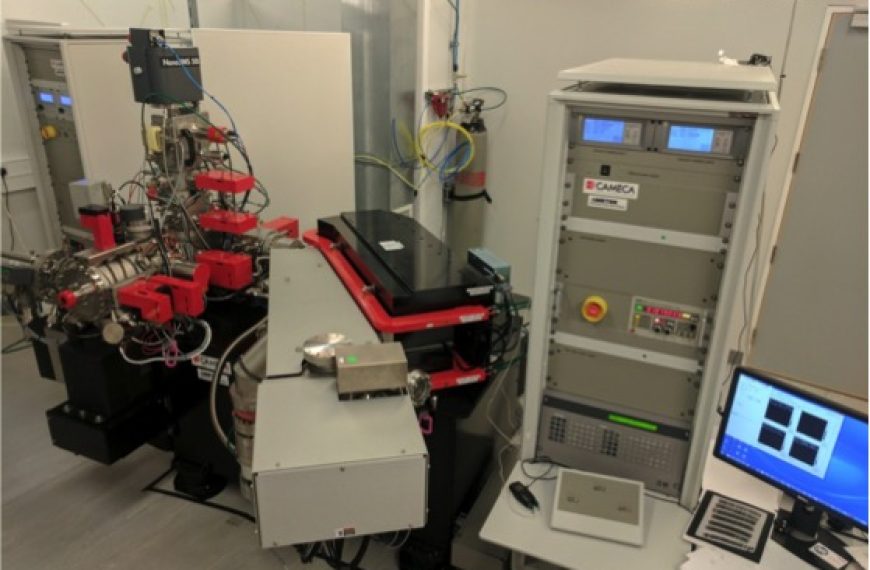Description
The Manchester University Cameca NanoSIMS 50L is a high resolution secondary ion mass spectrometry (SIMS) instrument that can be used to image and measure the isotopic and elemental distribution of elements in all types of samples, routinely achieving 100nm spatial resolution. It is capable of detecting isotopes of almost every element in the periodic table from hydrogen to uranium at ppm or ppb levels depending upon the element. Typical applications include trace or light element mapping and spatially resolved isotopic ratio measurements.
Uses / Applications
Typical applications include trace or light element mapping and spatially resolved isotopic ratio measurements. It can be an extremely powerful method for understanding the dynamics of processes by stable isotope labelling in materials across all scientific disciplines including biological samples. It is also one of the few techniques available that can spatially resolve hydrogen and deuterium distributions.
It is not particularly useful for the quantification of trace elements because matrix matched standards are required to convert the measured ion signal into a concentration. It is also one of the most complicated instruments in the Royce toolkit and is therefore not amenable to “quick look” types of experiments.

Specification
Spatial resolution: 50 nm with Cs+ beam (for electronegative elements), 50 nm with O- beam (for electropositive elements).
Detection limits: ppm to ppb, depending upon element.
Mass range: Hydrogen to uranium.
Mass Resolution: M/ΔM >10,000.
Detectors: 6 movable detectors and 1 fixed detector allow for parallel acquisition of 7 masses.
Analysis Chamber vacuum: ~5e-10 mbar (samples must be high vacuum compatible and flat).
Electron flood gun for the analysis of insulating specimens



